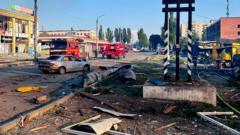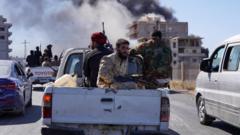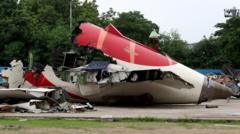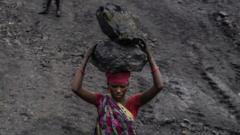The latest four-day conflict has escalated tensions between the two nations, leading to unprecedented military actions and disinformation.
#India-Pakistan Clash: A Deep Dive into Recent Escalations

#India-Pakistan Clash: A Deep Dive into Recent Escalations
A comprehensive overview of the renewed conflict between India and Pakistan following a major terrorist attack.
The recent violence between India and Pakistan reignited following a terrorist assault in Kashmir on April 22, leading to significant military engagements. In response to the attack, India accused Pakistan of harboring terrorists, launching a cross-border operation that quickly escalated into four days of intense clashes.
Initially, the conflict took a dramatic turn with India conducting airstrikes deep into Pakistani territory, targeting alleged terrorist sites and regional military installations. Reports indicate that the airstrikes were some of the most aggressive in decades, marking a significant change in the tactical approach by Indian forces. However, the strikes did not go as planned, as both Indian and Pakistani air forces engaged in a series of dogfights, resulting in the loss of aircraft on both sides, including some of India's top military jets.
As the conflict unfolded, the escalation was characterized by high-stakes military maneuvers, which resulted in India claiming to have thwarted a Pakistani attempt to strike military targets across several border towns. Contrary to earlier skirmishes, the conflict saw India targeting sensitive military infrastructure in Lahore—an action that experts suggested would likely trigger further escalation.
Throughout this period, both nations grappled with managing the complex narrative around the clashes, as disinformation and media blackouts complicated the public's understanding of the circumstances. The total impact of these confrontations on both sides remains difficult to assess, but it is expected that the consequences will linger for years as regional stability hangs in the balance.
Initially, the conflict took a dramatic turn with India conducting airstrikes deep into Pakistani territory, targeting alleged terrorist sites and regional military installations. Reports indicate that the airstrikes were some of the most aggressive in decades, marking a significant change in the tactical approach by Indian forces. However, the strikes did not go as planned, as both Indian and Pakistani air forces engaged in a series of dogfights, resulting in the loss of aircraft on both sides, including some of India's top military jets.
As the conflict unfolded, the escalation was characterized by high-stakes military maneuvers, which resulted in India claiming to have thwarted a Pakistani attempt to strike military targets across several border towns. Contrary to earlier skirmishes, the conflict saw India targeting sensitive military infrastructure in Lahore—an action that experts suggested would likely trigger further escalation.
Throughout this period, both nations grappled with managing the complex narrative around the clashes, as disinformation and media blackouts complicated the public's understanding of the circumstances. The total impact of these confrontations on both sides remains difficult to assess, but it is expected that the consequences will linger for years as regional stability hangs in the balance.




















